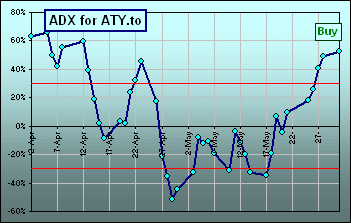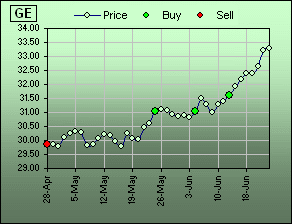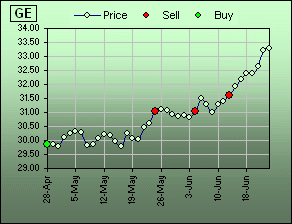| ADX stuff |
Once upon a time I wrote a tutorial on ADX ...
>I thought you were
giving up
on financial stuff. I thought you were going back to painting.
Yeah, well, there I was painting and the e-mail from Carl got me to thinking ...
>That was a mistake! Besides, what's that ADX stuff?
That's where one compares the changes in daily highs and lows and determines whether investors feel that your stock is going up
(when the daily highs increase more than the lows decrease) and ...
>Yeah, I remember. That's a bullish sign, eh?
When the highs increase more than the lows decrease? The ADX considers an exponential moving average,
and that'd give a Buy signal ...
>So?
So, when I first did that tutorial (years ago) it seemed a good idea, reflecting investor's sentiment.
Stock price going up? Get on the bandwagon! The bulls are out! ADX is high! Buy! Buy!
|
>Don't have a coronary! I assume that if ADX is low ... you sell, right?
>You mean BUY!
Then I looked at the ADX for the stock using the spreadsheet shown here
and got something like Figure 1 which said Buy.
>You mean: Stock prices are going up? Sell!
|  Figure 1 |
Look at the difference in the signals, for recent (April-June, 2004) GE data:
 Buy when ADX is high |
 Buy when ADX is low |
>I'd say Buy when ADX is low, right?
Yes, I'd say so. That's just the opposite of what is suggested by those who play with the
Directional Movement Indicator
(and ADX which is derived therefrom).
>And you have a spreadsheet?
Uh ... yes, but it ignores highs and lows and just uses the closing prices (Carl N. reminded me, in an e-mail, that I did this with mutual funds.)
>You can do that?
It's sorta cheating, but then the proof is in the pudding, eh?
Besides, it works for mutual funds which have a single price each day.
Anyway, it's interesting to consider the math behind using just the closing price (and no volume weighting as I did with
VDX)
... and that's what I'd like to do now.
 for Part 2
for Part 2